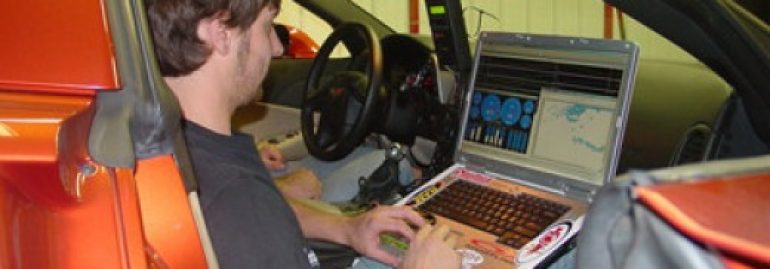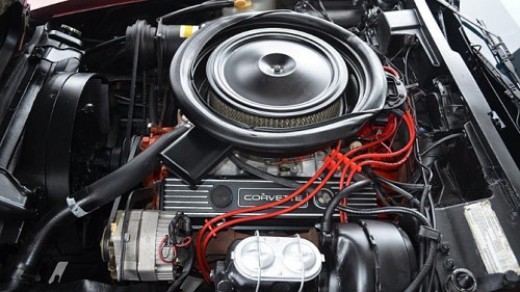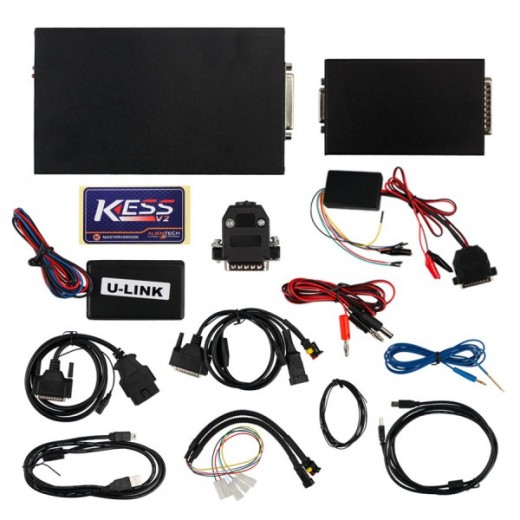The benefits, advantages and fun to be had with car chip tuning…
Tuning your car’s engine takes some skill and know-how but once you have started to master it you will find yourself enjoying hours of fun.
What is meant by the phrase “engine tuning”. Let’s start by accepting that the engine comes in many different types and shapes. This explanation is a generic description of on how a car is tuned. The aim is to get readers up to a speed where they can rev up their game by talking to aficionados and grease monkeys who can be found aplenty on the numerous online car forums.
A lot of people think that a car is tuned when it’s running at the top of its game. These people often think this is achieved simply by the car getting breathed on at a full service and adjustments being made to the vehicle’s factory specifications.
For some people tuning means enhancing the car’s performance and running capabilities so it’s better than it was when it was transported out of the manufacturer and set up and polished at the dealership.
What is certain though is that there is no doubt there are lots of opportunities to improve an engine and the body in which it arrives because so many manufacturers these days are using conservative settings and cheaper production methods.
Having decided you would like to attempt to tune your car what does it involve and how do you get started?
Here a number of methods for tuning a variety of popular models and engine types will be presented.
The main thrust will be to maximize the car’s performance, but, in so doing, the methods used are also available to use to maximize the car’s economy pushing its power unit into the most efficient range.
Boosting a car’s performance
Begin by making sure the car is in tip-top conditions. A full service is required. The engine needs to be running as it is meant to be. New oil, filter, spark plugs need to be added. If any leads are old they also need to be replaced.
Check the engine’s compression and get any major issues – like worn piston rings or worn or broken valves rectified. Monitor the valve clearance to prevent a significant loss of power.
Tuning a carburettor engine
Carburettor engines tend to rely on the spark being distributed by a breaker. This is done with a very basic mechanical advance when the Revs Per Minute are rising. Timing a spark to happen just a fraction earlier a more complete burn cycle can be achieved. This converts the fuel and air mix more efficiently into the power for which we are looking. Beware though because advancing it too much is a bad thing. The engine starts to knock.
In general the desired effect can be achieved by a simple trial and error approach. This can be done by gradually turning up the advance until the engine begins to knock, when the advance can be reversed until a good balanced setup is in place.
Balancing the timing and spark duration helps improve both economy and power because the engine is efficient.
Employing a strobe light linked to the pulse of the spark plug pulse effectively freezes the engine and shows the timing mark, which is on the pulley at the bottom of the cam belt. Here, in most cases, there is a tiny groove and a small notch on the engine.
Use some white paint to mark the notch and groove and the timing mark will show up when hit by the strobe, to enable better adjustment of the engine’s timing.
When the distributor housing is rotated the timing can be adjusted by retarding it or advancing it. This sort of adjustment needs to be tackled gradually. The engine will also require testing when it is under load and at the full range of rpm.
The best environment, which enables adjustments to be made live, involves the use of a rolling road dynometer. If the fuel needs to be increased to match the air that is taken a larger jet is needed.
Setting up a carburettor can take a lot of practice. When the car has twin carburettors then the job becomes even harder.
Most carburettors are delivered with the right jet sizes. They should only be upgraded when the engine requires dramatic alterations and the amount of air taken in increases significantly.
Fuel to air delivery need to be matched. Of course in modern engines with fuel injection this is becoming a moribund skill .
Tuning a fuel injection engine
Compared to a carburettor engine, one that is fuel injected is a much more sophisticated affair. Timing when a spark is delivered and adjusted and the amount of fuel required is very different.
The old fashioned mechanical distribution of a spark was in no way an ideal solution. It meant that engine was not able to run at peak efficiency a lot of the time.
The fact is that the timing of each spark needs to vary much more than allowed by a linear curve. To tackle this issue computers have been fitted to cars so that a fuel and timing map can be stored. This operates across a variety of intake conditions and loads to enable optimum running.
The majority of today’s engines now operate on closed loops. This means the parameters for each combustion cycle are set by the one before. The exhaust is monitored for oxygen emissions to check whether the car is running lean or rich and if the fuel being taken in is being adjusted to match.
A lot of the most popular engines are able to adjust themselves so they run at their optimum settings. Roughly every 200 miles to keep running efficiently they are able to automatically make the necessary adjustments.
Driving style, temperatures and different grades of fuel are taken into account. There is a little a keen do-it-yourself tuner can do except change the chip when the computer controls a car’s fuel delivery and timing. But more of this later.
If the engine is naturally aspirated it may well be possible to squeeze another 10 per cent or so of power by tightening the maps for fuel delivery and timing. As said before it is common for manufacturers to set their engines conservatively.
Tuning a turbo engine.
In turbo engines fuel delivery and spark timing are as essential as they are in fuel-injected versions. Indeed the same advice applies to turbo engines. The difference is that the benefits are much more noticeable thanks to the turbo. A turbo pushing an increased quantity of air into the engine, generates a lot more power.
As the turbo is the engine’s heart and soul it needs attention. By matching what drives exhaust and intake compression to the air can seriously affect a car’s power band.
Turbos can be hybridized with a turbo casing from an original equipment manufacturer (OEM) and by upgrading its internals. Another method is to either change the existing turbo with a larger version or to add a second turbo. The only consideration is how much power is required.
Those engines that date from the last century are known for being a challenge to remap. This means that the options are limited to piggy back devices or risky chip changes.
Since 2000 though most models have been supplied with On-Board Diagnostics Parameter IDs (OBDII) ports – codes that request the vehicle’s data. These enable a car’s computer to change or update the program controlling air/fuel ratios, ignition timing, and a whole lot more. Windows software like TOAD can do advanced tuning.
On these more modern turbo engines the computer tends to administer the boost and waste gates as well as the timing and fuelling providing much more scope for increasing power. Indeed, power gains of 40 per cent are relatively easy using stock parts and a simple remapping.
Other ways of tuning an engine.
Armed with the characteristics of timing there are many other modifications that can be done to a car’s power unit.
The huge number of modifications available for boosting an engine’s tune includes adding a sports camshaft that will increase the power, balancing the power unit so it’s able to run at higher RPM, and adjusting the timing. In addition a beneficial effect will be found by increasing the duration of an engine’s compression, induction, exhaust and bang cycles.
Causing the air to move though an engine more quickly is another priority for the home tuner. Sports exhausts, sport catalysts and head work like polishing and porting have further benefits for enhancing the power band.
With a turbo there are additional options available too. Intercoolers reduce intake air temperature and encourage larger power gains. A turbo can also be upgraded by either choosing a bigger turbo or getting and existing unit hybridized with improved internals.
Blow off and wastegate controls can be adjusted to boost power generated by an engine.
Tuning cars with chips
In spite of all the useful advice already given, it is a fact that the days of being able to simply get under the bonnet of a car with a set of spanners in an endeavour to make a car go faster are distinctly numbered.
The computers that operate modern engines (ECUs) have increasingly rapidly taken over a large number of the functions and controls that determine every aspect of how an engine is managed from timing to fuelling.
It means engines are now pumping out bigger and better power, coupled with cleaner burns and more reliable engines, but by no means is it the end of the road for the home tuner.
The map or program, call it what you will, is easily up rated in many of today’s cars. Chip tuning is a very loose term for describing processes for remapping a car’s engine.
Engine remaps and chip tuning are very similar but here the concentration is one the latter. The imperfect term is thought to derive from distant days when chips were not easily updateable and “reflashed”.
Nowadays chip removal and replacement is coming back as an important option, not least because some ECUs are locked. This means that replacing the chip is the only choice even though these would often have to be soldered and thanks to delicate chips, are likely to fail.
EPROMS are read-only memories whose contents can be cleared (by various means including with ultraviolet lights) and reprogrammed. These were able to be removed, reflashed and reinstalled.
Chip replacements used to be the sole way of changing a car’s map but it is now easily possible with standardized diagnostic ports.
Recently cars have been coming equipped with on board diagnostic ports which enable the uploading of a fresh map.
Chip tuning is not really something that can easily be done by the home tuner. To embark upon the task requires a detailed knowledge of the engine in question. Then the tuner has ideally to have access to a complete set of diagnostic equipment that is attached to a rolling road that allows “live” adjustments to be made to the mapping.
It is not just a matter of simply adjusting a few numbers and benefiting from a significant power gain.
DIY chip tuners also face the risk of bad flashes where the computer crashes and cannot be recovered. In the absence of a suitable restoration image either a new computer or an expensive visit to a main dealer may be required.
Chip tuning is best when it is possible to insert a custom map which takes into account a car’s characteristics, strong and weak, and whatever other modifications have been done to the car.
A few companies offer replacement chips which have a sportier feel. There are performance chips which can be installed either by a home tuner or a specialist installer.
Often off the shelf these maps are designed to be fitted in a large variety of vehicles. Although these offer benefits over the standard equipment they will never be as good as a custom map that has been specifically designed for a particular car and a driver’s idiosyncratic driving style.
In general most cars will demonstrate the benefits of a replacement chip but to see the really large gains turbocharged applications are required. In a Naturally Aspirated engine (NASP) power gains are generally between 10 and 20 per cent, but in turbo engines these power gains grow to about 40 per cent in a petrol engine and 30 per cent in a turbo diesel engine.
Even cars that receive relatively low power gains from remaps are going to be more lively drives.
Peak power gain figures are just a tiny proportion of the tuning equation. The first and foremost reasons for leaping into the fine art and science of chip tuning is to have an impact of how an engine responds under acceleration and how its torque curves.
There are downsides, however, there is an increased requirement for servicing and car maintenance on a regular basis.
By chip tuning a vehicle the safe margin of error that the manufacturer has built in is eroded by the action. This is an important consideration because those safe margins are there to protect against the effects of filling up with low quality fuel and the sort of wear and tear that comes with a car being services at longer intervals.
Any remap should only take place when a car has been serviced and is running in the best condition possible.
—
Now, that you’ve read a basic intro guide to car tuning, time to delve deeper into the details with: Getting Started With Car Tuning: Part 2 the technical details








